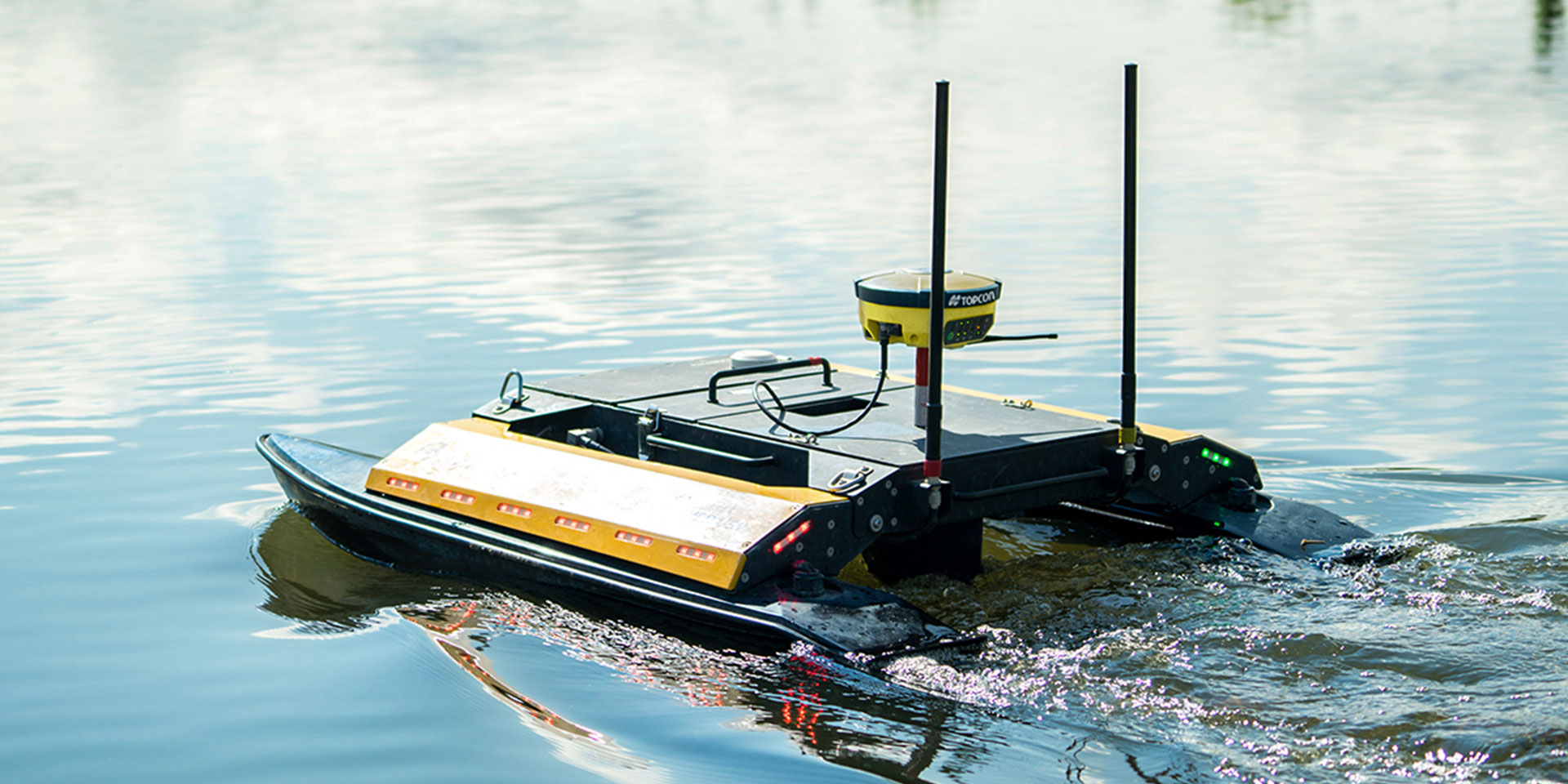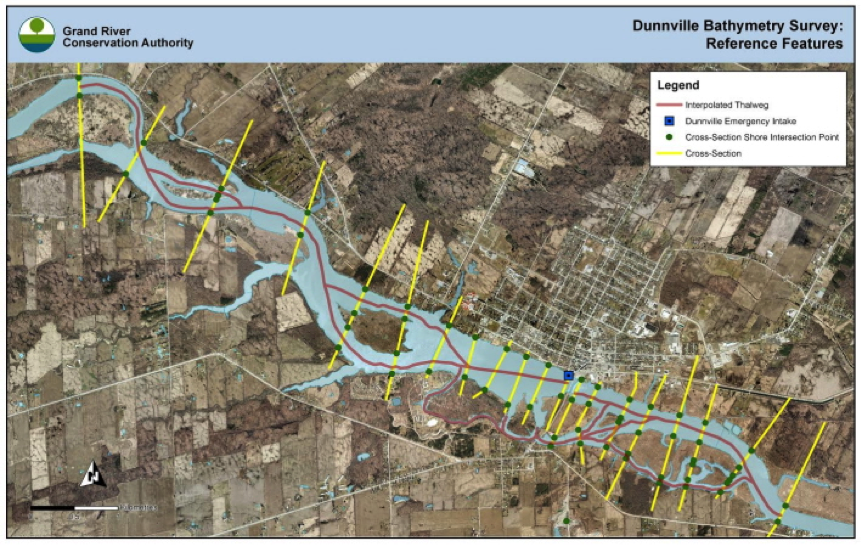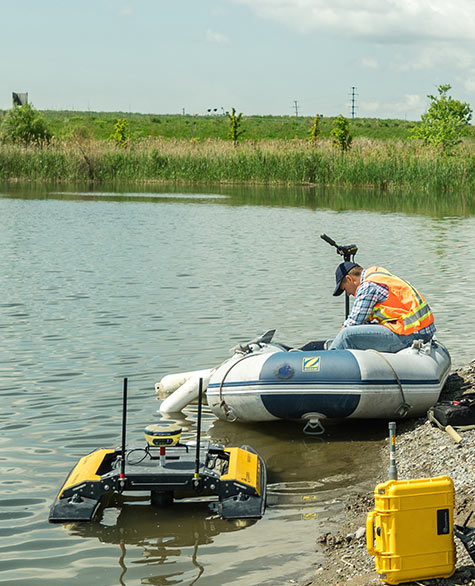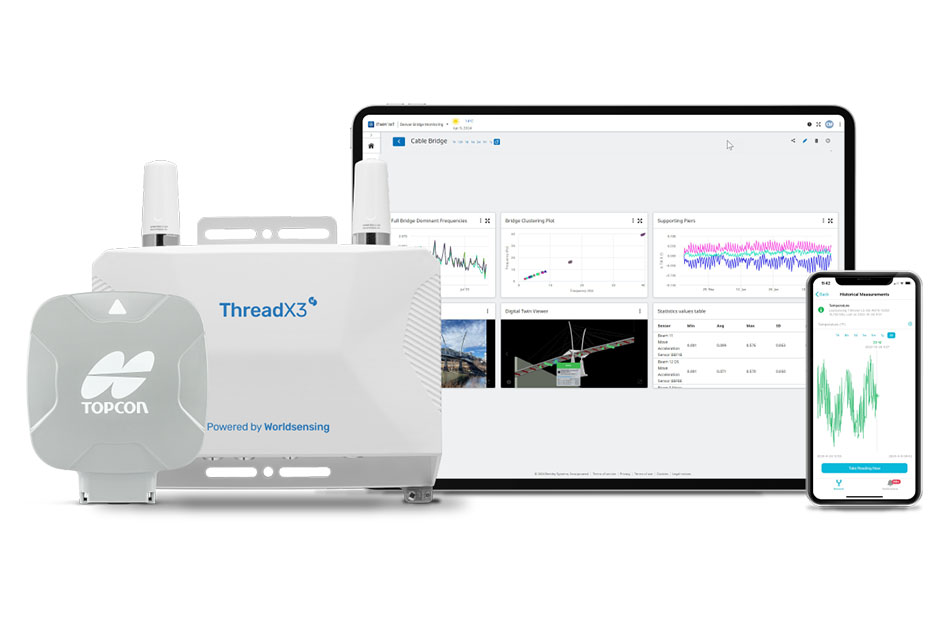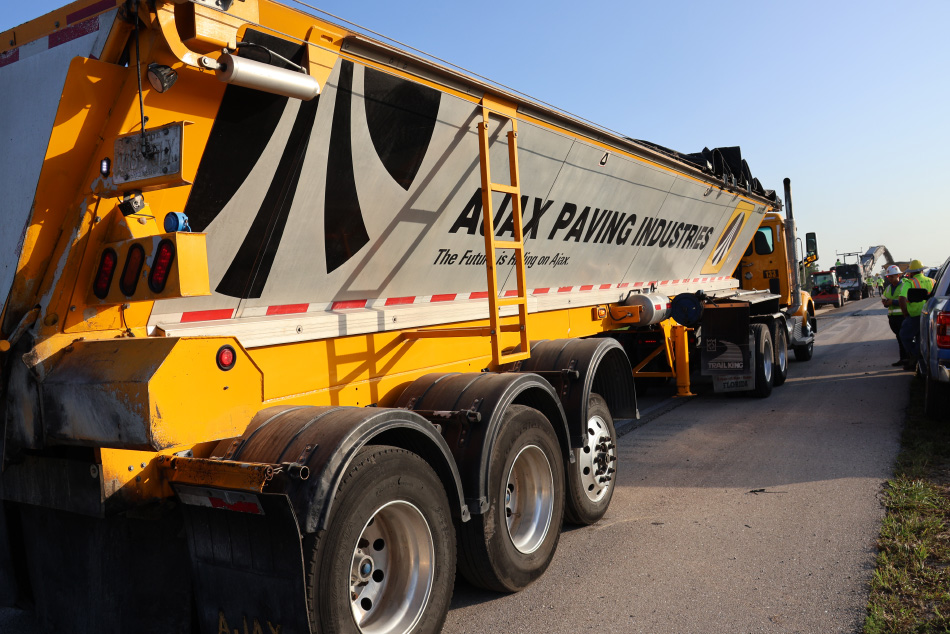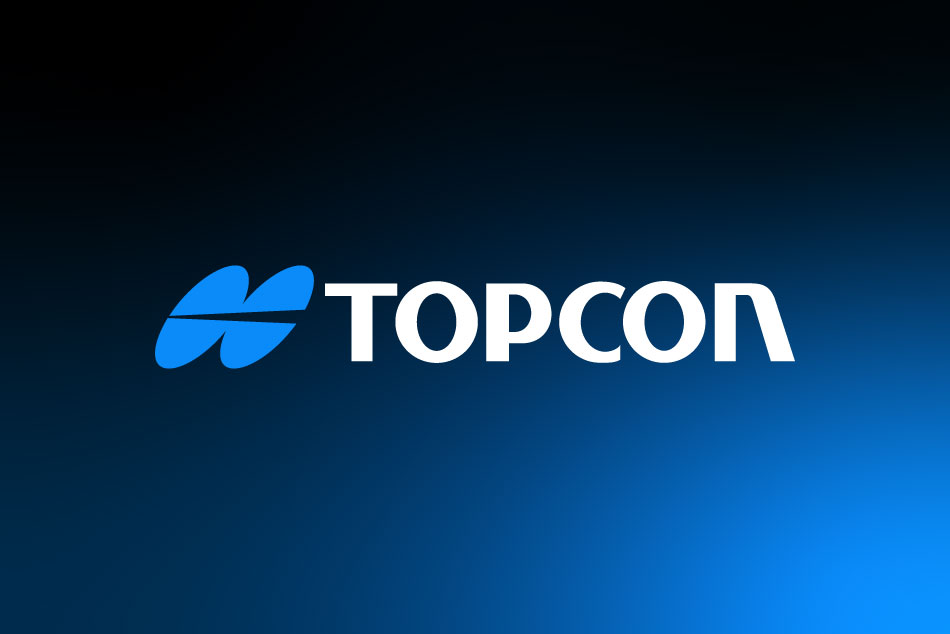Hunt Surveys with the Kingfisher was to retrace those old survey lines (to determine the original quality or changes) and then densify and add to the data. Within the 10 km extent, the additional data included areas of 20 meter transects (sections), a 1 – 3 meter offset run from edge of water, running the thalweg (deepest points) and streamlines, and measuring some edge of water points separately from the boat.
Prior to fieldwork (launching of Kingfisher), the Hypack software was loaded with old survey lines and also the pre-planned transect lines to travel for the entire extents. Site reconnaissance was undertaken to review safety concerns/plans, launch points and crew accommodations for the anticipated eight to 10 days of fieldwork. Due to the dams and cold water, safety was a paramount issue for the field staff.
While Kingfisher is unmanned, there was a need to work with a support boat due the large extents (10 km) of the project. While the RTK TopNETlive signal provided full coverage, the system Wi-Fi could only extend approximately 300 meters. Similarly the shoreline was mostly privately owned lands and very difficult terrain, thereby not allowing the Kingfisher remote operator to work from shore.
For the long stretch runs, Kingfisher was assisted in propulsion speed by lashing to the support boat. This allowed for an increase in speed from approximately 1 meter per sec to 2 meters per sec. In detail areas close to the shoreline or edge of water, and in areas near the dams — Kingfisher was remotely controlled by the operator from the support boat.
As the data was shown live on the laptop and Hypack software screens, full coverage of the project plan was achieved.
Once fieldwork was completed, the raw data files were again separately processed in the office version of the Hypack software. Data was filtered for weak signals, and outliers, and then parsed for unnecessary density by another internal software tool. The processed data was then imported into terrain modeling software and was reviewed for quality control. The final deliverables were a points file and CAD file to the client.
Generally, a successful project for all—with client satisfaction and meeting budget — Hunt Surveys key success factors were achieved: accuracy, safety, economy.











